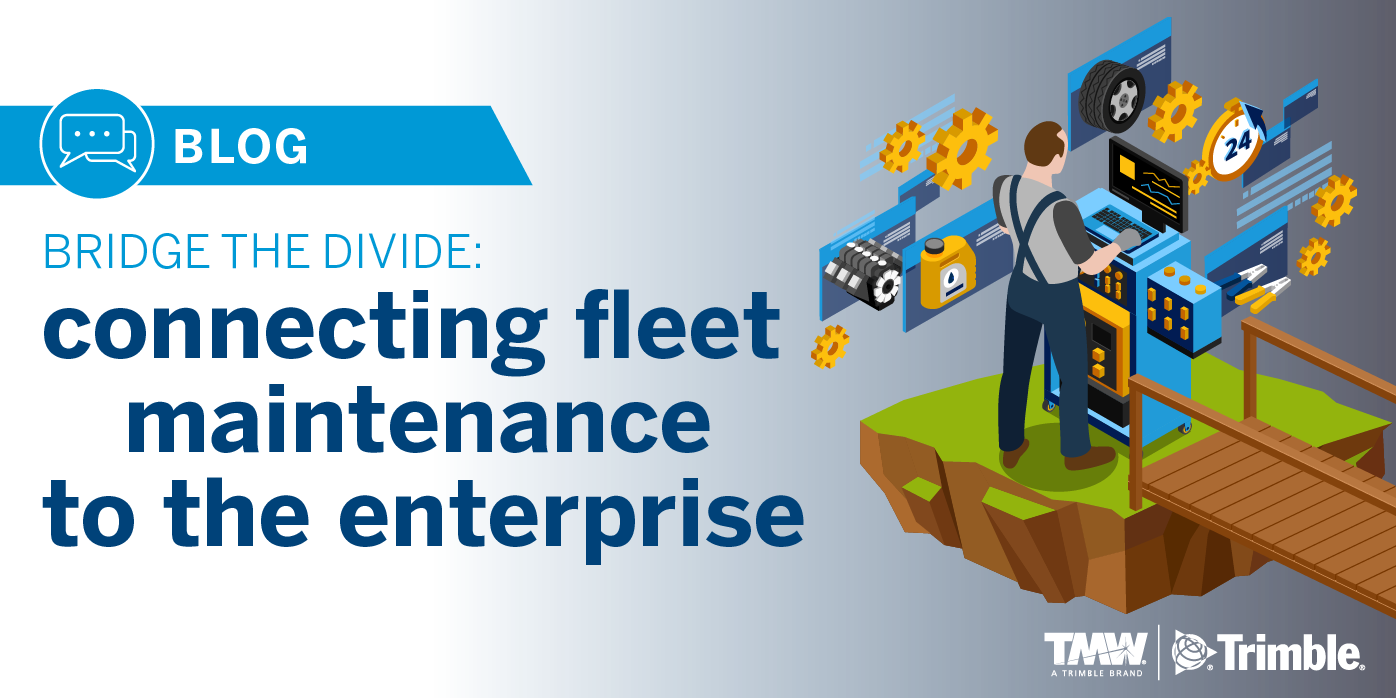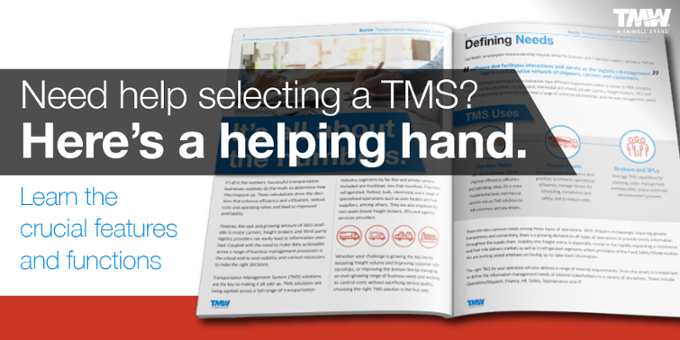
The organizational structures and IT systems of transportation companies traditionally have been geared for operations and the order-to-cash cycle of loads. Investments in fleet maintenance management systems and related integrations tend to lag behind, causing transactions and information to become lost on an island of its own, apart from the full business enterprise.
PM schedules, repair histories, parts inventory and lifecycle costs, among other functions, may be disconnected from the enterprise, but provide proven value to a connected fleet. At a minimum, the symptoms of the disconnect include scheduling and availability guesswork and inefficiencies from double data entry, and the results include excess costs, downtime and safety violations.
If properly bridged, fleet maintenance systems can deliver key insights and visibility to all departments to maximize return on investments in equipment, people and technology. Below are some of the immediate pathways to connect maintenance with core functions in operations and finance.
The Full View for Maintenance Operations
Trimble Fleet Maintenance and TMS systems have pre-built integrations that give visibility to load planners to match the right equipment with orders and drivers.
Operations can identify assets that are unavailable for dispatch in the TMS and take an active role in routing vehicles into shops when PM intervals, equipment inspections and repairs are coming due.
By the same token, operations can have visibility to immediate maintenance needs using real-time connections with telematics and other applications.
Electronic driver vehicle inspection reports (eDVIR) can feed defects noted by drivers’ during pre-trip and post-trip inspections directly to the Trimble Fleet Maintenance system. Shop personnel can immediately open work orders and schedule repairs that are visible to operations.
Other sources of real-time information that connect fleet maintenance with operations for triggering proactive alerts include:
Truck telematics - asset locations, mileage, engine hours, fuel efficiency and fault codes can automatically update maintenance records and trigger notifications.
Fleet cards - purchase data for fuel and over-the-road maintenance expenses can track changes in vehicle performance and identify problem areas.
Trailer telematics - mileages, tire pressures, axle temperatures, brake wear, and defective lights can be monitored to identify items needing maintenance.
When Fleet Maintenance is Outsourced
In addition to having visibility of internal shop repairs, transportation companies with a fully connected maintenance system can maximize efficiency for outsourced repairs and services.
Decisiv’s cloud-based service relationship management (SRM) platform is used by vehicle manufacturers, dealers and independent service providers to communicate and collaborate with fleets.
With this data, service centers have a more complete history of the asset to help schedule and complete repairs and preventive maintenance services. The integrated platform also gives fleets visibility of parts and labor costs, PM schedules and other line items to approve repair work.
When connected to the financial and accounting systems of an enterprise, companies also will realize back-office efficiencies. Payroll and vendor payments become streamlined, and companies will have more robust financial reporting capabilities to make optimal buying and selling decisions.
Not all fleet maintenance systems in the market have the capabilities to build and support these and other enterprise connections. With the right systems in place, the role of maintenance in an organization will be elevated for the benefit of all. See how by downloading our brand new guide, “Bridge the Divide.”



